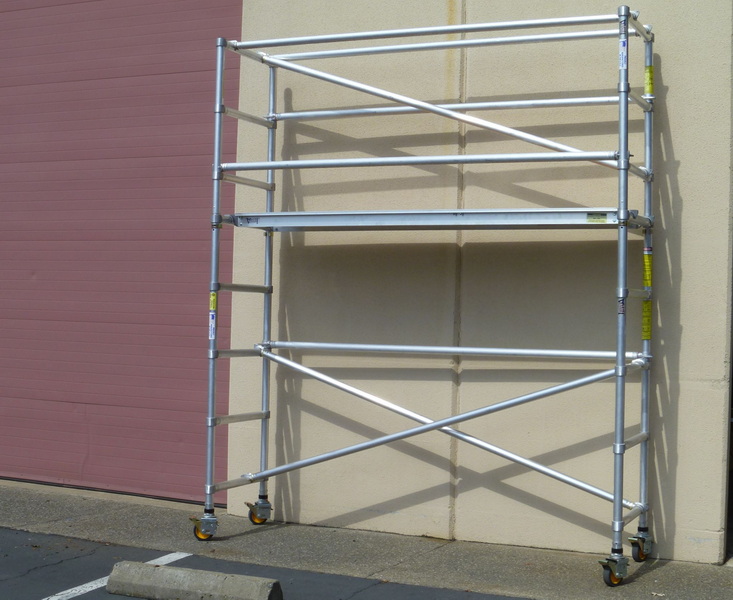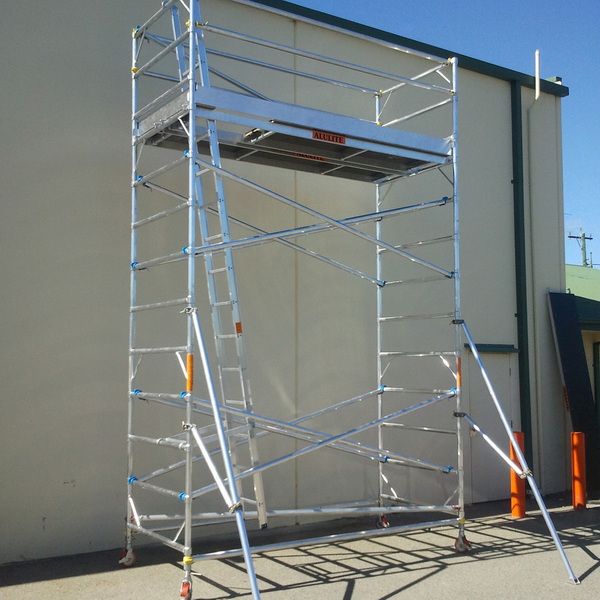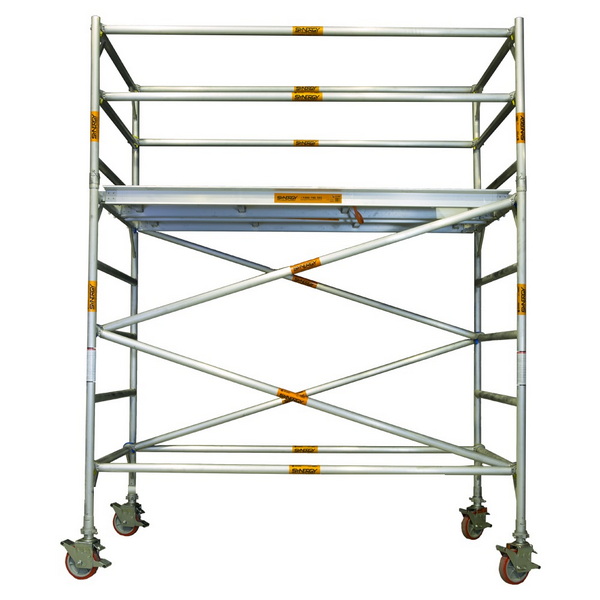Content Menu
● Understanding Aluminum Scaffold Systems
● Key Benefits of Using an Aluminum Scaffold System
>> Lightweight and Portable
>> Ease of Assembly and Disassembly
>> Durability and Corrosion Resistance
>> Versatility and Expandability
>> Cost-Effectiveness
>> Safety
>> Recyclability
● Applications of Aluminum Scaffold Systems
● Safety Precautions and Best Practices
● Comparing Aluminum and Steel Scaffold Systems
● Conclusion
● FAQ
>> 1. What are the primary advantages of using an aluminum scaffold system?
>> 2. Is aluminum scaffolding suitable for heavy-duty tasks?
>> 3. How does the cost of aluminum scaffolding compare to steel scaffolding?
>> 4. What safety precautions should be taken when working with aluminum scaffolding?
>> 5. What are the common applications of aluminum scaffolding?
● Citations:
In the construction, maintenance, and repair industries, selecting the right scaffolding system is crucial for ensuring worker safety, project efficiency, and cost-effectiveness. While steel has historically been a dominant material for scaffolding, the aluminum scaffold system has emerged as a compelling alternative, offering a unique combination of advantages. This article explores the key benefits of using an aluminum scaffold system, examining its properties, applications, and overall value proposition.

Understanding Aluminum Scaffold Systems
An aluminum scaffold system is a temporary structure composed primarily of aluminum components, including tubes, frames, braces, and platforms. These components are designed to be easily assembled and disassembled, providing a versatile and adaptable platform for workers to perform tasks at various heights.
[Image: A typical aluminum scaffold system erected on a construction site, showcasing its lightweight design and modular construction.]
Key Benefits of Using an Aluminum Scaffold System
Lightweight and Portable
One of the most significant advantages of an aluminum scaffold system is its lightweight nature[1][3]. Aluminum is a very light material, which translates into a relatively low weight for the scaffolding system[1]. This significantly facilitates transport and handling, especially on sites with limited access or when frequent relocation is necessary[1][3]. The low weight also reduces the physical strain on workers during assembly and disassembly[3]. This does not require large delivery vehicles, which translates into lower transport costs[1]. The low weight of the scaffolding makes them mobile and can be used in many places[1]. They are also not a big load for the ground, so they work well in slightly more difficult conditions[1].
Ease of Assembly and Disassembly
Aluminum scaffold systems are renowned for their ease of assembly and disassembly[3][5]. The simple interlocking systems and lightweight components allow for quick erection and dismantling, saving valuable time and labor resources[5]. With some systems, there is no need to use specialized tools, which also translates into easy assembly and disassembly work[1].
Durability and Corrosion Resistance
Aluminum possesses excellent durability and high resistance to mechanical damage[1]. It is also naturally corrosion-resistant, ensuring a long and durable life for the scaffolding system[3]. It is naturally resistant to rust and humidity and that is what makes it so unique and convenient option[3]. Thanks to the appropriate surface protection, it will not rust, which extends the life of the aluminum scaffolding and allows it to maintain its excellent technical parameters for longer[1]. Aluminum is a non-flammable and non-toxic material, it works great inside and outside the building[1]. It meets all standards, even the most demanding ones, which is why the scaffolding made of aluminum is used in food and chemical plants[1]. Aluminum scaffoldings also come in a naturally corrosion resistant manner which ensures long and durable life of your gear[3].
Versatility and Expandability
Aluminum scaffold systems are highly versatile and can be adapted to various construction and maintenance projects[1]. Some systems can be freely expanded in all directions. If necessary, they can be supplemented with additional platforms and supporting elements[1].
Cost-Effectiveness
While the initial cost of an aluminum scaffold system may be slightly higher than that of a steel system, the long-term cost benefits often outweigh the upfront investment[3][5]. The durability of aluminum reduces the need for frequent repairs and replacements, while the ease of assembly and disassembly lowers labor costs.
Safety
When using the aluminum scaffold system workers need to be trained on the safety hazards and precautions. A stable and solid platform to work on is the key to having a good start and completing a project successfully[4].
Recyclability
Aluminum is eternally recyclable without deteriorating in quality over time, thereby decreasing waste and lowering the ecological effect[7].

Applications of Aluminum Scaffold Systems
Aluminum scaffold systems are well-suited for a wide range of applications, including:
- General construction[5]
- Maintenance and repair work[4]
- Painting and decorating[4]
- Installation of electrical and mechanical systems
- Work in food and chemical plants[1]
- Commercial buildings with a large number of storeys, as well as for lower single-family houses[1].
Safety Precautions and Best Practices
When working with aluminum scaffold systems, it is essential to follow safety precautions and best practices to minimize the risk of accidents:
- Training: Aluminum scaffolds require erection, movement, dismantling, and maintenance. These tasks must get performed in specific ways[6].
- Fall Protection: Aluminum scaffolds are required to have a fall arrest system or fall protection available for anyone more than ten feet above a lower level[2].
- Guardrail Height: You must also ensure that the guardrail height must meet certain expectations[2].
- Hazards: The hazards associated with aluminum scaffolds involve the operating environment, the tasks performed, and local variables that include tools, individual fitness, and unpredictable factors[6]. For most scaffolds, the biggest hazard is a fall[6].
- Tagging Systems: When the competent person is on-site with the aluminum scaffold, they're also responsible for providing instructions to the workers about safety[6]. This process usually involves attaching color-coded tags to the product[6].
Comparing Aluminum and Steel Scaffold Systems
| Feature | Aluminum Scaffold System | Steel Scaffold System |
| Weight | Lightweight | Heavyweight |
| Portability | Easy to transport and relocate | Difficult to transport and relocate |
| Assembly | Quick and easy | More time-consuming and labor-intensive |
| Durability | Excellent corrosion resistance | Susceptible to rust and corrosion |
| Strength | Suitable for light to medium-duty tasks | Suitable for heavy-duty tasks |
| Cost | Higher initial cost, lower long-term cost | Lower initial cost, higher long-term cost |
| Applications | Versatile for various projects, especially those requiring portability | Best suited for large-scale construction projects with heavy load requirements |
Conclusion
The aluminum scaffold system offers a compelling combination of lightweight design, ease of assembly, durability, versatility, and cost-effectiveness. While steel scaffolding remains a viable option for certain applications, the benefits of aluminum make it an increasingly popular choice for a wide range of construction, maintenance, and repair projects. By understanding the advantages of aluminum scaffold systems and adhering to safety guidelines, contractors can create a safer, more efficient, and more productive working environment.

FAQ
1. What are the primary advantages of using an aluminum scaffold system?
The primary advantages are lightweight design, ease of assembly, durability, corrosion resistance, versatility, and cost-effectiveness[1][3][5].
2. Is aluminum scaffolding suitable for heavy-duty tasks?
Aluminum scaffolding is generally suitable for light to medium-duty tasks[5]. For heavy-duty applications, steel scaffolding may be a better option.
3. How does the cost of aluminum scaffolding compare to steel scaffolding?
Aluminum scaffolding typically has a higher initial cost but a lower long-term cost due to its durability and reduced maintenance requirements[3][5].
4. What safety precautions should be taken when working with aluminum scaffolding?
Key safety precautions include proper training, fall protection, regular inspections, and adherence to load capacity limits[2][4][6].
5. What are the common applications of aluminum scaffolding?
Common applications include general construction, maintenance and repair work, painting and decorating, and installation of electrical and mechanical systems[4][5].
Citations:
[1] https://slv-group.eu/en/news/light-but-stable-advantages-of-aluminum-scaffolding/
[2] https://alufasescaffold.com/aluminum-scaffold-safety-guide/
[3] https://msafegroup.com/aluminium-scaffolding-advantages/
[4] https://www.stgindustrials.com/aluminium-mobile-scaffolding-safety-precautions-and-dos-and-donts/
[5] https://grsscaffolding.com/blog/advantage-and-uses-aluminium-scaffolding/
[6] https://alufasescaffold.com/workplace-safety-procedures-for-aluminum-scaffolds/
[7] https://msafegroup.com/what-are-the-benefits-of-aluminum-scaffolding/
[8] https://www.tytruss.com/newsclass_3/Precautions-use-of-aluminum-mobile-scaffolding.shtml






















